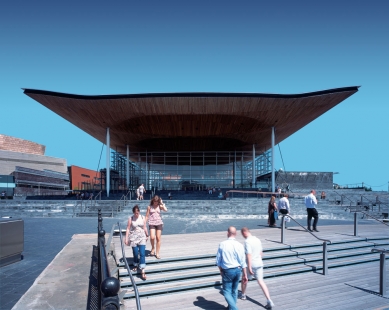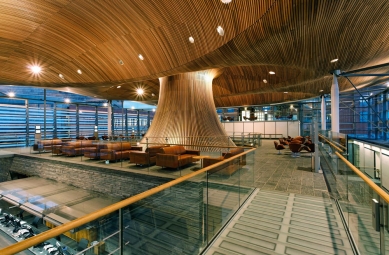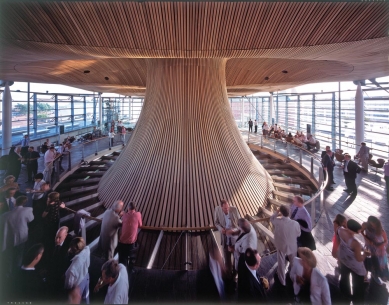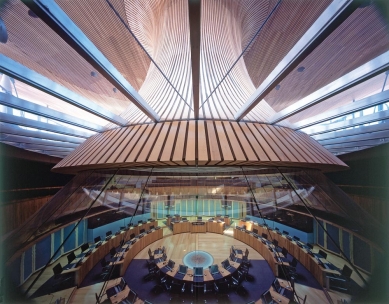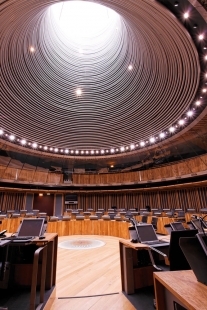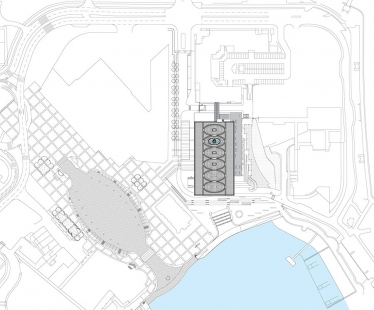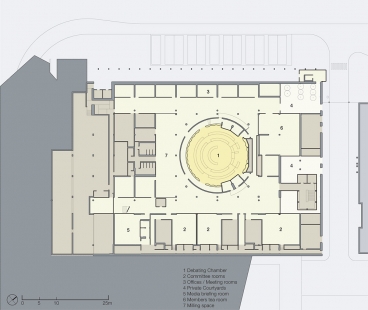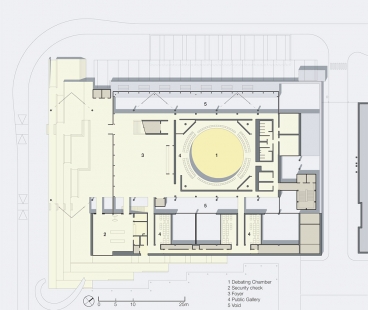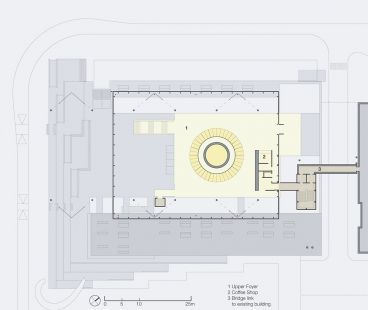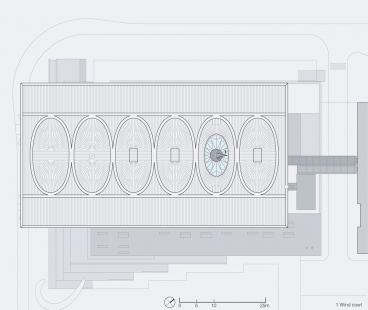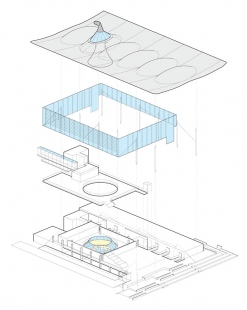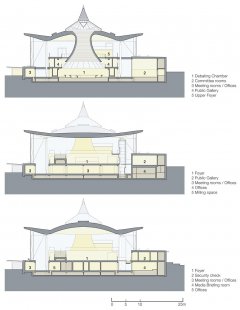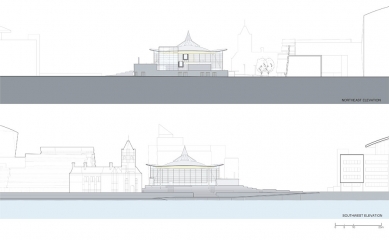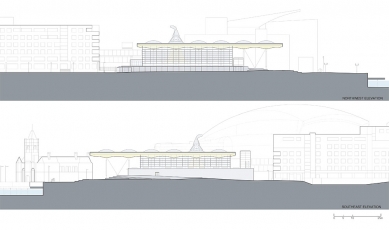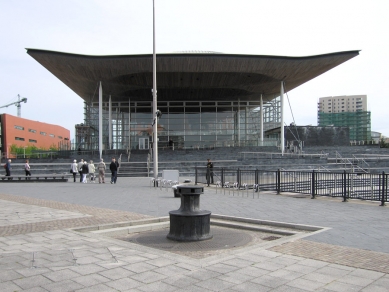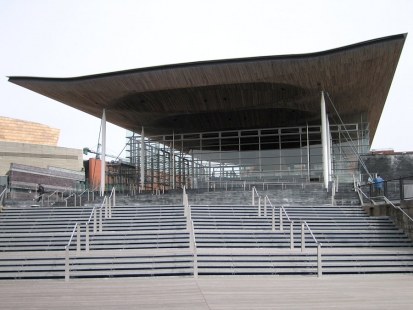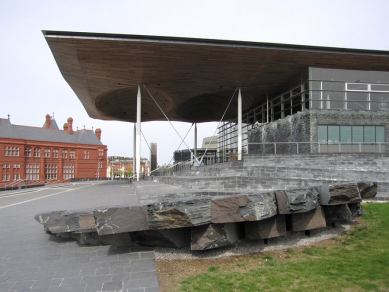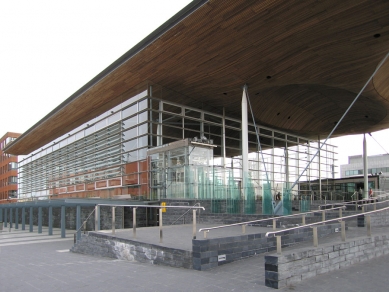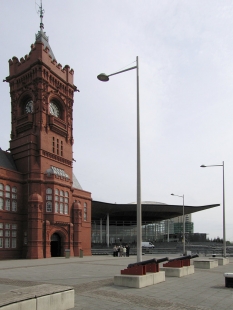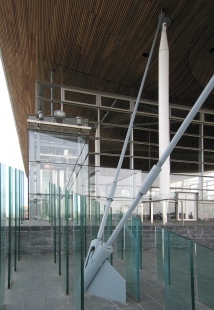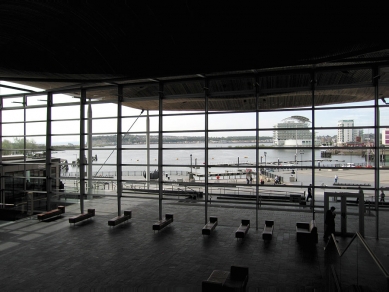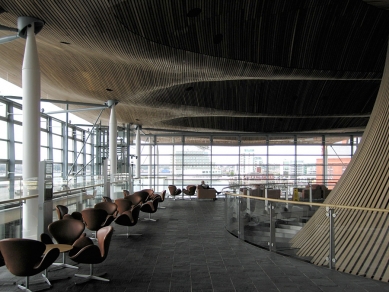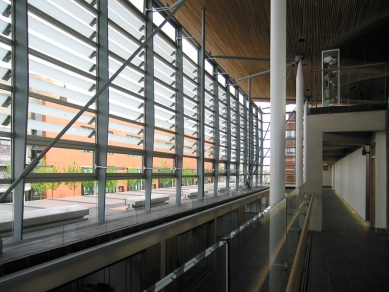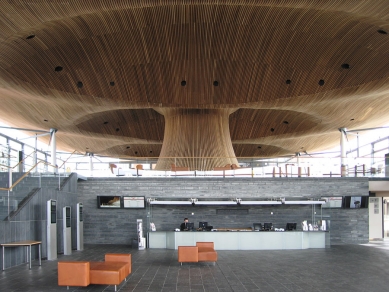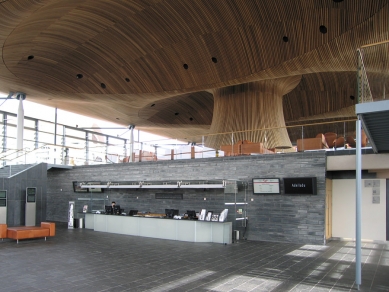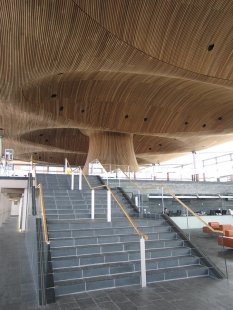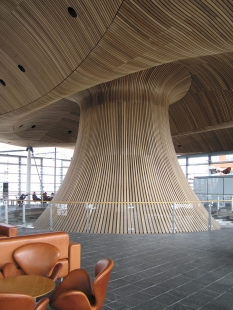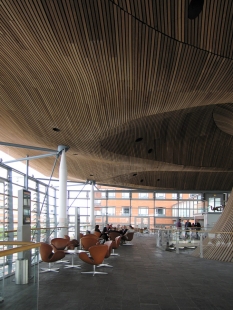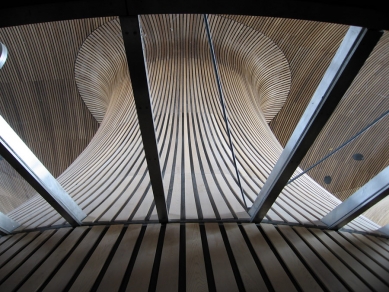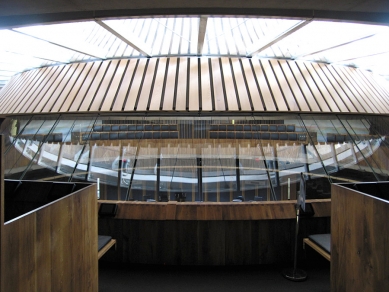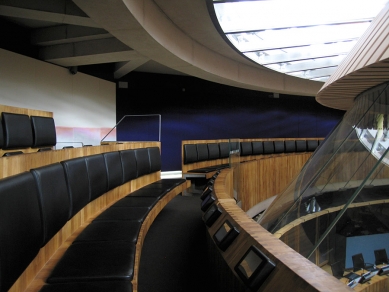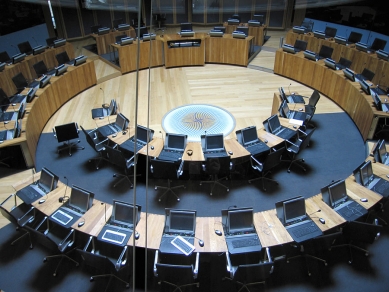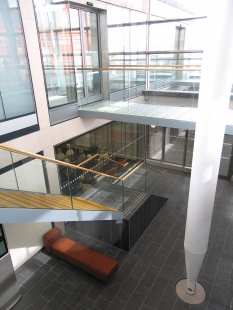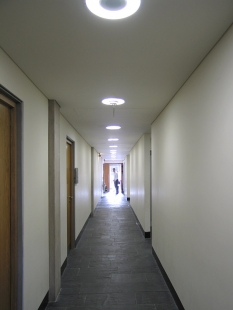
National Assembly for Wales

 |
The setting is the Pierhead, around a mile from the city centre and once the centre of the coal exporting trade that was fundamental to the rise of Cardiff. Nearby are the Victorian Grade I listed Pierhead Building and the new Wales Millennium Centre, which includes the permanent home of Welsh National Opera. The building has an open aspect over Cardiff Bay to the Bristol Channel.
The idea of openness is exemplified by the transparent form of the building. Public spaces are elevated on a slate-clad plinth stepping up from the water level and cut away to allow daylight to penetrate the administrative spaces at lower level. A lightweight, gently undulating roof shelters both internal and external spaces, pierced by the protruding extension of the 60-seat Debating Chamber.
A large, circular space at the heart of the building, the Chamber is defined by the dramatic roof form which is drawn down from the roof above to form the enclosure. The Assembly building will also include exhibition and education spaces, a café, committee and meeting rooms, press facilities, offices for the principal officers and a members' lounge.
The servicing strategy is designed in tune with the varying demands of the internal spaces - air conditioning is supplied in the debating chamber, while the public lobby is naturally ventilated. Heat exchangers capitalise on the potential of the ground as a cooling mechanism, while the thermal mass of the plinth itself tempers fluctuations in the internal environment of the building. In this way, the design will achieve significant energy savings as compared with a traditional building.
Hard landscape extends from the plinth to touch the adjoining buildings. This, together with a canopy of trees, creates a close for the Assembly and completes the jigsaw of new development in this part of Cardiff Bay. Neither grandiloquent nor lacking in presence, this is a building closely in tune with the institution it houses and promises to be the first major architectural landmark of 21st century Wales.
1 comment
add comment
Subject
Author
Date
nepostrádá nedostatek reprezentativního vzezření?
pipe
10.05.07 01:35
show all comments


